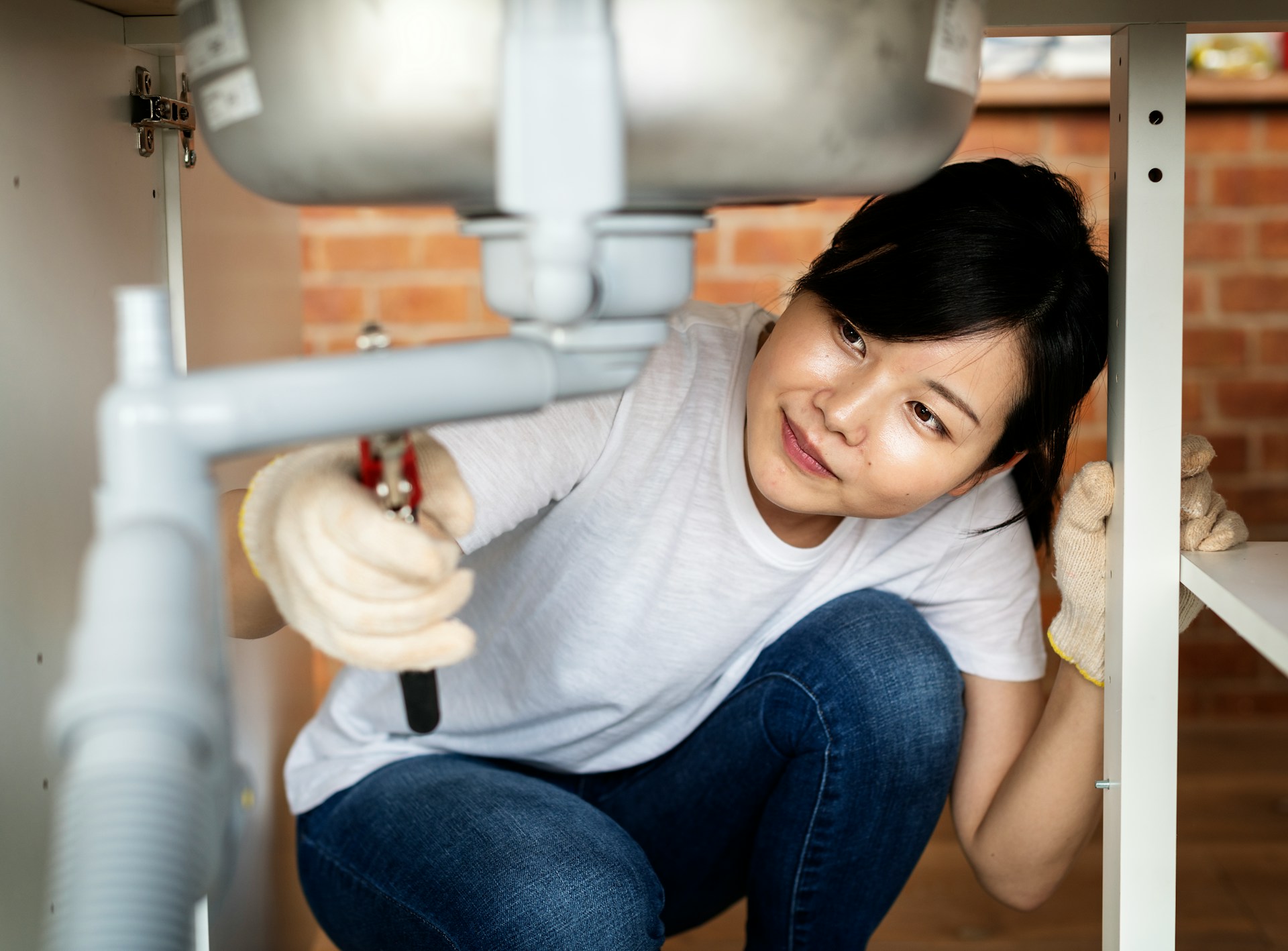Hidden water leaks can quietly damage your home long before you realize anything is wrong. From warped flooring to weakened drywall, leaks that go undetected can lead to expensive repairs and structural concerns. In a place like Tomball, where humidity can compound indoor moisture issues, early leak detection is especially important. Acting quickly can help homeowners avoid mold, foundation trouble, or damage to personal belongings.
Most leaks do not make a dramatic entrance. They start slow, often behind walls, under floors, or in areas of the home with less foot traffic. That is why being able to recognize the signs early, even when everything looks normal on the surface, can save time, stress, and money. Learning where to look and what patterns to spot is key when it comes to protecting your home from water damage.
Common Signs of Hidden Water Leaks
Leaks that stay hidden for long periods tend to leave behind a series of subtle signs. The sooner you catch them, the better you can prevent costly damage. Watch for the following issues that often point to a water leak somewhere in the home:
– Unexpectedly high water bills with no change in usage
– Damp or soft spots on floors, especially near kitchens or bathrooms
– Streaks of water, bubbling paint, or discoloration on walls and ceilings
– Musty or earthy smells, even after cleaning
– Mold or mildew appearing in areas that are not normally wet
– Sounds of running water when no fixtures are in use
For example, one Tomball homeowner noticed the bathroom floorboards were slightly warped near the base of the toilet. After checking carefully and lifting a section of flooring, they found slow leakage from a cracked pipe joint that had been dripping for weeks. A small clue, like soft wood underfoot, led to catching the problem before it caused major damage.
When these warning signs show up, it is important not to ignore them. Even if the leak is small, the long-term impact can still be severe, especially in moisture-prone areas like bathrooms, laundry rooms, or behind appliances such as dishwashers.
Inspecting Your Home for Hidden Leaks
Taking the time for a quick inspection around your home can make a big difference. While not everything will be visible to the naked eye, there are certain places and actions that can reveal unseen water issues before they progress.
Start with these steps:
- Check under sinks in bathrooms and kitchens for moisture, puddles, or mildew
- Feel around toilet bases to detect dampness or a loose fit that may indicate a bad seal
- Go into crawl spaces or basements and look for damp spots on the ground or walls
- Look at ceilings below bathrooms or near upstairs laundry areas for brown stains or sagging spots
- Open cabinets near plumbing and check for soft wood, peeling laminate, or moldy smells
- Monitor your water meter: Turn off all taps indoors and outside, then watch the meter to see if it still moves within a 30-minute window
These simple steps can help homeowners stay ahead of potential leaks before they cause major problems. Inspections done every few months or any time you notice something off can prevent unnecessary structural repairs or mold remediation costs later on. Water damage does not need to come from a major disaster. More often, it is the small things left unchecked that turn into big issues down the line.
Advanced Detection Methods for Hidden Leaks
Sometimes, surface-level checks are not enough to determine where a leak is coming from. Hidden leaks often occur behind walls, under floors, or in the piping beneath slabs. These types of problems require more than just a flashlight and a quick look around. That is when advanced tools become necessary to properly detect the source.
Infrared cameras are one of the most effective tools for identifying hidden water leaks. They work by capturing temperature differences in building materials, which helps locate cooler areas where moisture may be collecting. These cameras can scan entire walls or floors without needing to tear into anything, making them a reliable first step when a visible sign of damage is not yet present.
Moisture meters are another helpful tool. When pressed against walls, ceilings, or floors, these devices measure the amount of water within the surface. If the reading comes back high, there is a strong chance a leak is nearby. These are especially useful in bathrooms, laundry rooms, and areas around the water heater.
Acoustic listening devices can track flowing water by picking up sound through pipes and building materials. Our technicians often use this method when the leak is happening underground or within a wall cavity. By listening closely for patterns, they can uncover where the leak is occurring without invasive drilling or demolition.
Using these tools speeds up the process and improves accuracy, which means less time spent guessing and faster solutions delivered before the damage grows worse. A homeowner in Tomball recently reported a recurring mildew smell in the hallway with no signs of staining or moisture. With a thermal camera, the leak was traced to a cracked pipe inside the wall between the kitchen and bathroom. Without that technology, that leak may have gone unnoticed for weeks longer.
When It’s Time to Call the Professionals
While routine inspections can catch many red flags early, certain situations call for trained hands and professional tools. If discoloration spreads across multiple walls or ceilings, if water pressure suddenly drops, or if there are frequent pipe sounds when nothing is in use, it is likely time to bring in professional support.
Other warning signs include:
– New mold spots that return even after cleaning
– Water pooling where it should not be
– Rising water bills that cannot be traced to usage
– Musty smells that linger even in well-ventilated rooms
– Sudden dampness in rarely used rooms or corners of the house
Waiting too long can make the problem harder to fix. Moisture can weaken drywall, rot floor joists, and create the right conditions for harmful mold. Tomball homes with older plumbing or hard water issues tend to develop leak-related problems over time. If leaks come up often or keep recurring in the same location, there is likely a deeper issue that needs attention. Our technicians are trained to look beyond surface signs so lasting corrections can be made.
Protecting Your Tomball Home From Water Damage
Preventing major water damage in your home starts with one thing: staying alert. Small issues that may seem harmless today can end up costing a lot if they go unnoticed for too long. Taking time to check for hidden leaks, especially in areas prone to moisture, can save you from expensive repairs and health issues down the line.
Routine maintenance should always include checking commonly overlooked spaces such as behind appliances, near water heaters, and under cabinets. During seasonal changes, especially toward fall when plumbing use increases, it is smart to perform a more thorough check of your home’s water systems. That means keeping an eye out for stains, damp patches, or even unusual smells.
Staying proactive limits the risk of long-term issues and gives you more control over your home’s condition. When something seems off, catching it early through water leak detection in Tomball makes a big difference. Monitoring your living space and getting help when needed is the clearest way to prevent water from creating bigger headaches later. A little effort now can keep your home safe, dry, and in good shape for the long haul.
Homeowners in Tomball looking to avoid costly repairs can benefit from timely water leak detection in Tomball to identify problems before they escalate. Tradition Services uses advanced tools and expert technicians to locate hidden leaks quickly and accurately, helping to protect your home from long-term damage. For a quick estimate or to book a service visit, please contact us today.

